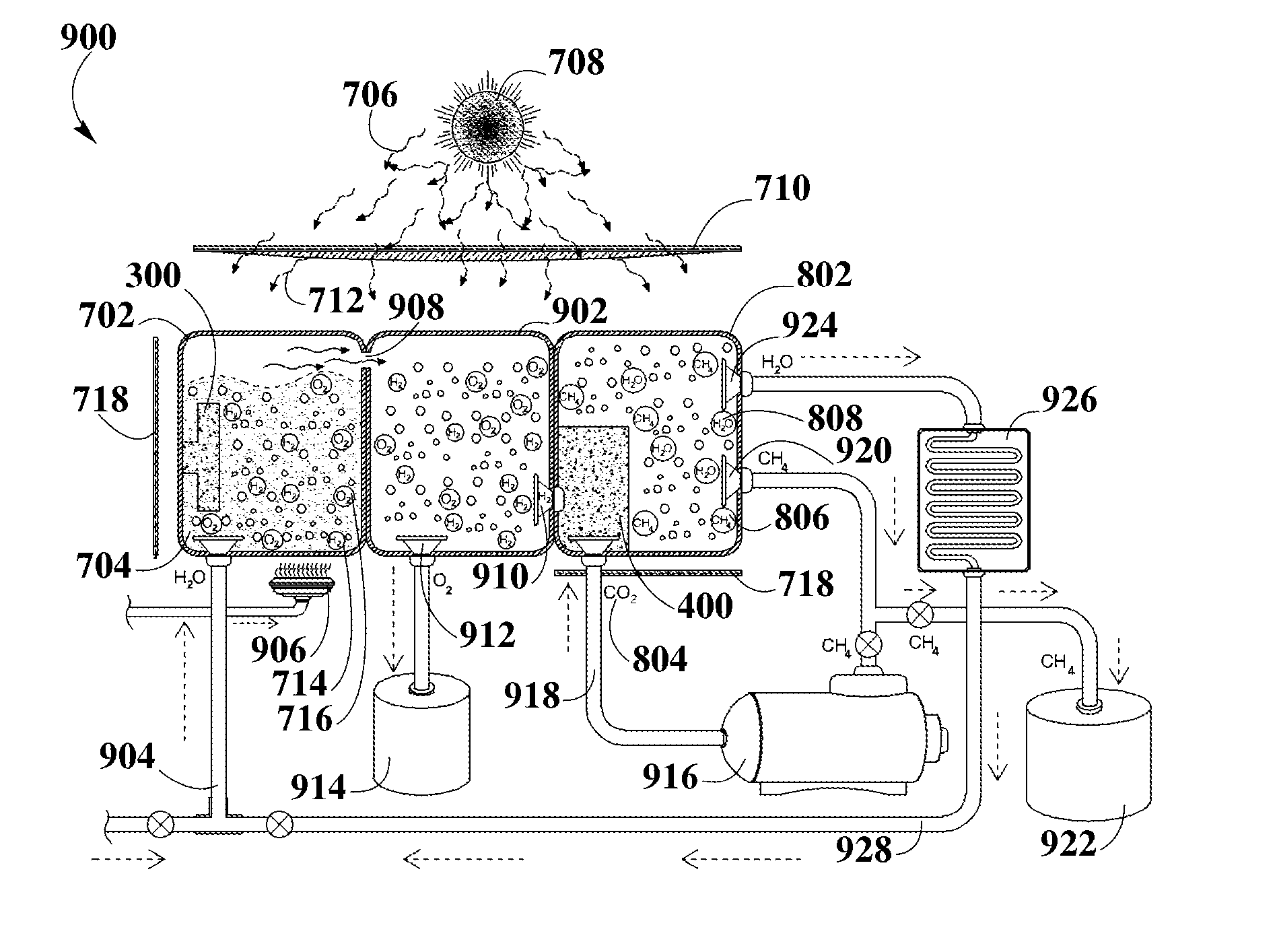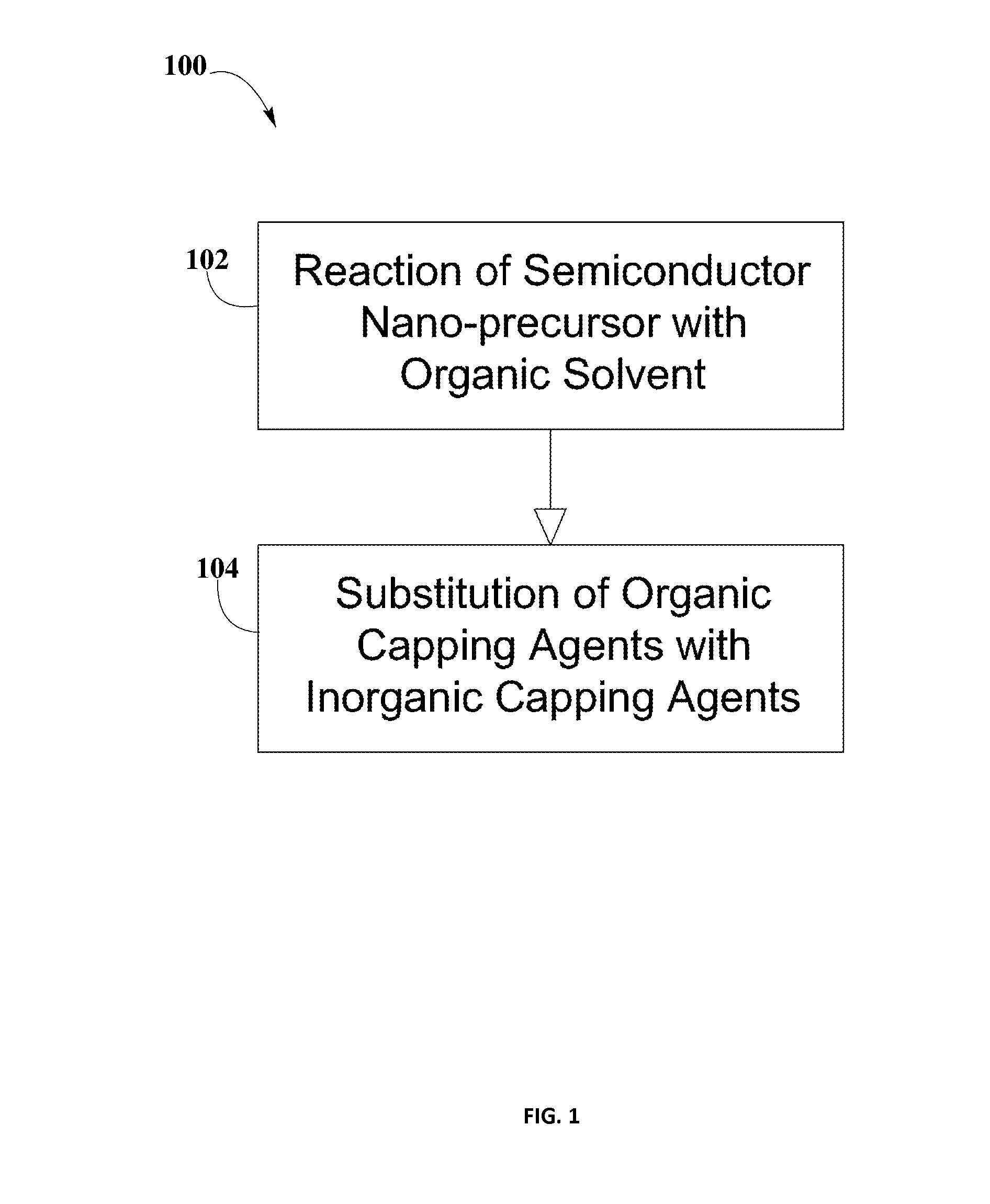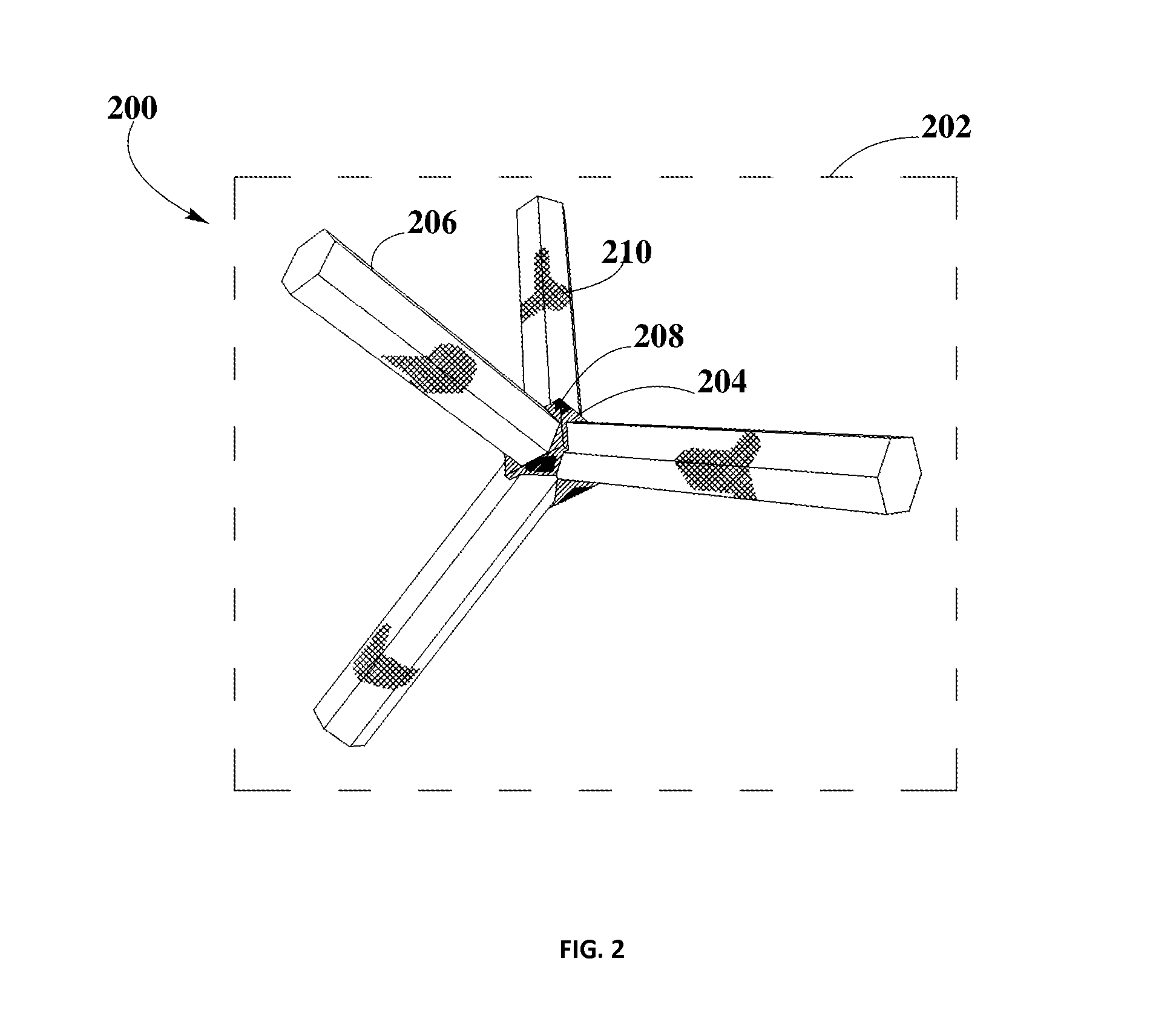Artificial Photosynthetic System Using Photocatalyst
a photocatalyst and photocatalyst technology, applied in physical/chemical process catalysts, metal/metal-oxide/metal-hydroxide catalysts, instruments, etc., can solve the problems of low reaction rate of current photocatalytic systems, increasing the damage of burning fossil fuels, and increasing the damage of fossil fuels, so as to speed up the redox reaction and inhibit the recombination of electron holes. , the effect of speeding up th
- Summary
- Abstract
- Description
- Claims
- Application Information
AI Technical Summary
Benefits of technology
Problems solved by technology
Method used
Image
Examples
examples
[0113]Example #1 is an embodiment of photosynthetic system 900 where gas collecting chamber 902 is not included, in which oxygen gas 716 and hydrogen gas 714 from reaction vessel A 702 may be transferred directly into reaction vessel B 802. Hydrogen gas 714 may pass through hydrogen permeable membrane 910 in order to be transferred into reaction vessel B 802; oxygen gas 716 may pass through oxygen permeable membrane 912 in order to be collected into an oxygen storage tank 914.
PUM
| Property | Measurement | Unit |
|---|---|---|
| energy | aaaaa | aaaaa |
| band gap | aaaaa | aaaaa |
| band gap | aaaaa | aaaaa |
Abstract
Description
Claims
Application Information
 Login to View More
Login to View More - R&D
- Intellectual Property
- Life Sciences
- Materials
- Tech Scout
- Unparalleled Data Quality
- Higher Quality Content
- 60% Fewer Hallucinations
Browse by: Latest US Patents, China's latest patents, Technical Efficacy Thesaurus, Application Domain, Technology Topic, Popular Technical Reports.
© 2025 PatSnap. All rights reserved.Legal|Privacy policy|Modern Slavery Act Transparency Statement|Sitemap|About US| Contact US: help@patsnap.com



